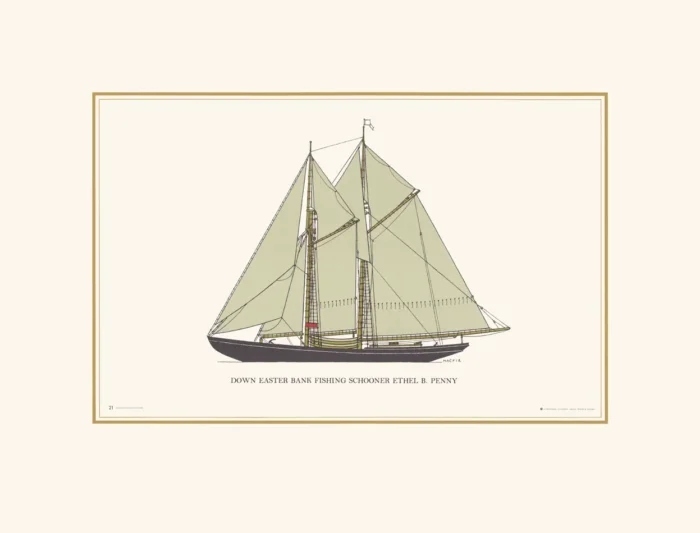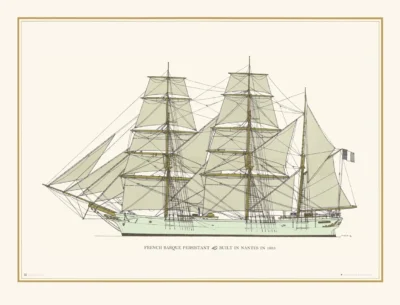Down Easter Bank Fishing Schooner, Ethel B. Penny
£15.00
Down Easter Bank Fishing Schooner: built exclusively in Maine, USA (scroll down for a more detailed Description)
Published 1963 by Hugh Evelyn; drawn by Swedish marine artist Gordon Macfie (1910-1971) for Tre Tryckare of Gothenburg (who retain copyright)
Print size: c 44 cm x 33.5 cm [17½″ x 13″] (may vary slightly from printers’ cut 50 years ago)
Printed on light orange (RGB c. fdf1dd) cardstock c. 300 g/sm2
Print is LARGE size – shipping is the same for 1 to 10 prints (based on largest print size in your order) – see Shipping & Returns
In stock
Description
The Down-Easter was designed and built exclusively in Maine. It combined speed, cargo capacity, and strength – a combination necessary to match the brutal weather off the Grand Banks and around Cape Horn with a shifting cargo of wheat. Early fishing vessels, called Chebacco boats, were designed primarily for near-shore fishing, but larger versions of these sturdy, high-stemmed and sharp-sterned craft, called pinkies, could voyage as far as Labrador. Pinkies were followed by larger schooners designed for fishing the offshore banks and carrying the catch to the West Indies. Huge five- and six-masted schooners were built in Bath, Waldoboro, Rockland, and Camden. During the Civil War northern shippers abandoned transatlantic voyages to carry goods along the coast and into Canada, and because these voyages required a great deal of manoeuvrability, Maine produced gigantic schooners – vessels rigged fore-and-aft for steering into the wind.
Additional information
| Weight | 0.0292 kg |
|---|---|
| Dimensions | 44 × 33.5 cm |





